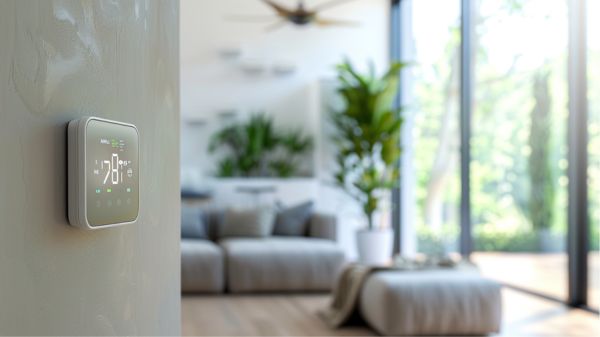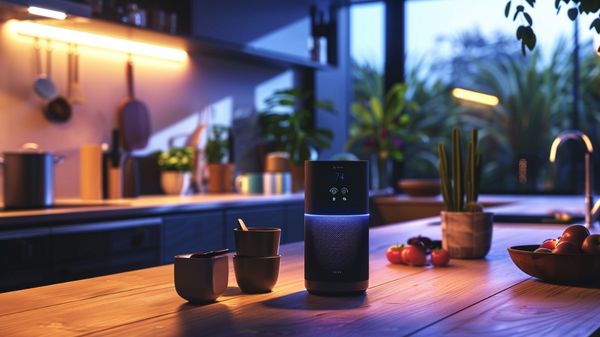Have you ever struggled to find the perfect winter thermostat setting? We’ve all been there, wanting to stay warm and cozy while also being mindful of our energy consumption.
Well, fear not! In this article, we’ll explore various temperature options for different scenarios during the winter season.
From finding the ideal temperature for when you’re at home to adjusting it at night and when you’re away, we’ve got you covered.
Get ready to dive in and discover the best practices for staying warm and efficient this winter!
Ideal Temperature for Winter
The recommended temperature for winter is 68ºF, but let’s face it, we all have different preferences. Some of us like to feel like we’re in a tropical paradise, while others prefer to hibernate like a bear in a cave.
However, there are some benefits to experimentation when it comes to finding the optimal temperature range for your home. Not only can you save money and energy by lowering the indoor heating, but you may also develop the ability to withstand colder temperatures.
Plus, who doesn’t love the opportunity to bundle up in cozy blankets and wear stylish winter attire indoors?
Adjusting Temperature at Night
Now let’s delve into the topic of adjusting the temperature at night to optimize comfort and energy savings. Here are some key considerations for finding the perfect nighttime temperature:
- The United States Department of Energy recommends keeping homes at 65ºF at night. Cooler temperatures not only conserve heating and save money, but they also result in better sleep. So, embrace the chilly embrace of a cozy night’s rest!
- Don’t forget to bundle up with warm bedding and pajamas. This provides added warmth and allows you to tolerate lower indoor temperatures, saving both energy and money. Plus, who doesn’t love snuggling into a toasty cocoon of blankets?
- Chariot Energy offers energy-saving options to help you sleep soundly with a clear conscience. By utilizing their innovative solutions, you can optimize the benefits of sleep while also minimizing your energy consumption.
- Experiment with different temperatures to find the ideal setting for your home. After all, the quest for the perfect night’s sleep is a journey worth taking, and the rewards are energy savings and a well-rested you!
Ideal Temperature for When You Are Away
When we’re away, it’s important to adjust the temperature in our homes to ensure the well-being of our pets, house plants, and prevent any potential risks.
Energy saving strategies play a crucial role in managing heating costs during this time. The Department of Energy recommends keeping our homes at 64ºF if we’ve pets. This not only provides a comfortable environment for them but also helps conserve energy.
House plants, on the other hand, require a slightly lower temperature of 60ºF to stay alive. It’s also essential to adjust the temperature higher if there’s a risk of pipes freezing. By checking the weather and setting the thermostat accordingly, we can ensure a safe temperature for our homes while saving on heating costs.
Chariot Energy offers options that can assist households in achieving these energy-saving goals. So, even when we’re away, we can still manage our heating costs and ensure the well-being of our pets and house plants.
Lowest Setting Option for Winter
To ensure the health and safety of residents during winter, it’s recommended to keep homes at a minimum temperature of 50ºF to 55ºF. Here are four reasons why this lowest setting option is crucial:
- Prevents water damage: Lower temperatures put the home at risk of frozen pipes, which can burst and cause costly water damage. Nobody wants a swimming pool in their living room!
- Energy-saving benefits: Heating a home to a slightly lower temperature can save money and energy. It’s like giving your wallet a warm hug while also reducing your carbon footprint. Win-win!
- Health and safety: Maintaining a minimum temperature ensures that residents stay warm and cozy, avoiding the risk of hypothermia or other cold-related health issues. We want you to stay toasty and healthy!
- Vacant homes: Even if your home is vacant, keeping the temperature at these minimum levels is important. It helps protect the structure and prevents potential issues when you return.
Saving Money When Heating Your Home
We frequently save money when heating our homes by using renewable energy options and setting the thermostat to the ideal temperature.
Renewable energy options, such as solar panels or geothermal heating, can significantly reduce energy costs over time. Additionally, investing in energy-saving thermostats can help optimize heating efficiency and further save money.
These thermostats have features like programmable schedules, occupancy sensors, and remote control capabilities, allowing us to adjust the temperature based on our daily routines and preferences.
By utilizing these technologies, we can ensure that our homes are heated only when needed, avoiding unnecessary energy consumption and expenses.
Experimentation for Home Temperature
Let’s explore different temperature settings for our homes through experimentation. Here are four ways we can benefit from colder temperatures and find energy-saving options for our homes:
- Embrace the Cold: By lowering the thermostat, we can save money and reduce our carbon footprint. Plus, it’s a great excuse to wear cozy sweaters and snuggle up under blankets.
- Sleep Soundly: Cooler temperatures at night promote better sleep. So, turn down the heat, bundle up with warm bedding and pajamas, and wake up feeling refreshed.
- Keep it Cool When Away: When we’re not at home, lowering the temperature to 64ºF conserves energy and prevents unnecessary heating. Just remember to adjust higher if there’s a risk of pipes freezing.
- Experiment and Save: Through trial and error, we can find the perfect temperature for our homes. Energy-saving options, like those offered by Chariot Energy, can help us save money and reduce our impact on the environment.
Benefits of Cooler Temperatures at Night
When experimenting with different temperature settings for our homes, one of the benefits we can discover is the improvement in sleep quality that comes from cooler temperatures at night.
You might be thinking, ‘How can cooler temperatures actually improve my sleep?’
Well, let me enlighten you. When we sleep, our body temperature naturally drops, signaling to our brain that it’s time to rest. By creating a cooler environment in our bedrooms, we’re facilitating this natural process and helping our bodies enter a deeper, more restful sleep.
Plus, cooler temperatures can also prevent us from overheating during the night, which can often lead to tossing and turning.
Considerations for Pets and House Plants
Taking into account the needs of pets and house plants, it’s important to consider their specific temperature requirements during the winter season. Here are some considerations to keep in mind:
- Find heating options for apartments that are pet-friendly: Look for energy-saving tips for pet owners, such as using space heaters with built-in safety features or investing in heated pet beds.
- Create a cozy environment for your furry friends: Provide warm bedding, blankets, and clothing to keep them comfortable. Remember, a happy pet means a happy home!
- Don’t forget about your green companions: House plants thrive in temperatures around 60ºF, so make sure to keep them away from drafts and cold windows. Consider using plant heating mats to maintain the ideal temperature.
- Save energy while keeping everyone happy: Optimize your thermostat settings by adjusting the temperature when you’re away, using programmable thermostats, and exploring renewable energy options. Your pets and plants will thank you, and so will your wallet!
Importance of Heating for Health and Safety
Now that we’ve considered the specific temperature requirements for pets and house plants during the winter season, how does heating contribute to the health and safety of both humans and their beloved companions?
Maintaining a warm indoor environment in winter has numerous health benefits. It helps to prevent illnesses such as colds, flu, and respiratory infections by keeping our immune systems strong. Heating also promotes better circulation, which is essential for cardiovascular health. Additionally, it ensures proper humidity levels, preventing dry skin and respiratory issues.
Safety precautions should also be taken when heating our homes. Always ensure that heating systems are well-maintained and free from any potential hazards. Carbon monoxide detectors are essential to detect any leaks from furnaces or heaters.
Conclusion
Finding the perfect winter thermostat setting is crucial for achieving comfort, savings, and energy conservation.
One interesting statistic to consider is that lowering the temperature by just one degree Fahrenheit can save up to 3% on heating costs.
By experimenting with different temperatures and implementing money-saving tips, we can create a warm and cozy environment while being mindful of our budget and the environment.
Stay informed and make the most of your winter heating experience.




